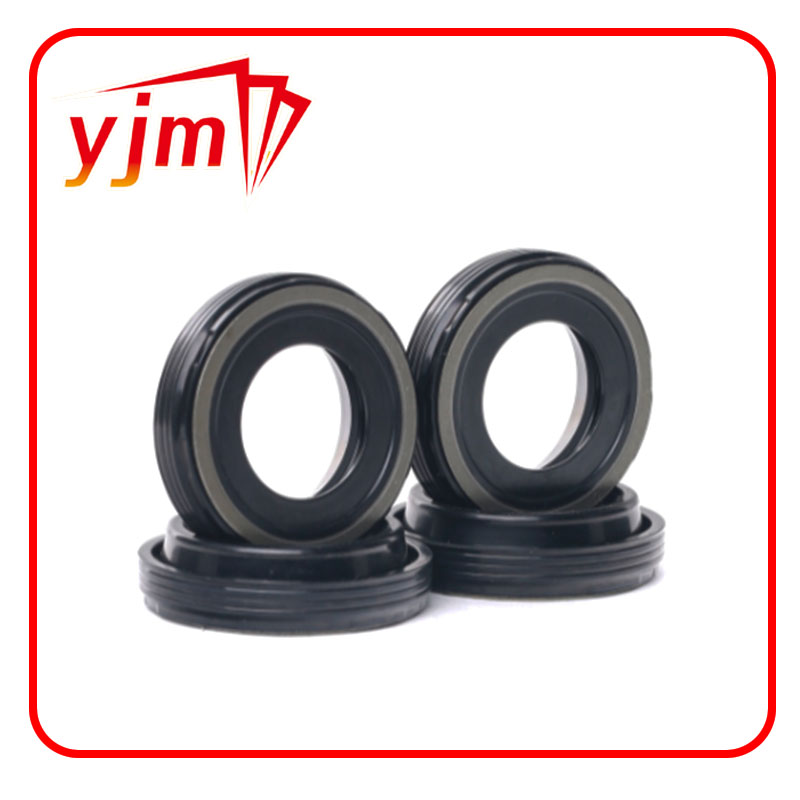oil seal selection
Oil Seal Selection A Comprehensive Guide
Oil seals, also referred to as lip seals or rotary shaft seals, play a crucial role in various mechanical applications, from automobiles to industrial machinery. Their primary function is to prevent the leakage of oils and lubricants while simultaneously keeping contaminants out. Choosing the right oil seal is vital for ensuring the long-term efficiency and reliability of a system. This article will discuss key factors to consider when selecting an oil seal.
1. Understanding the Application
The first step in oil seal selection is to thoroughly understand the application. This includes the type of machinery involved, the operating environment, and the fluids being contained. Different industries may have unique requirements, and knowing the specifics—such as temperature ranges, pressure levels, and rotational speeds—will help narrow down the options.
2. Material Selection
The material of the oil seal is one of the most critical factors influencing its performance. Common materials include nitrile rubber (NBR), fluorocarbon rubber (FKM), and polyurethane (PU). For instance, NBR is widely used due to its excellent oil resistance and flexibility, making it suitable for various automotive and industrial applications. However, if the seal needs to withstand extreme temperatures or aggressive chemicals, fluorocarbon might be the better choice. Therefore, understanding the nature of the contained fluid and the operational environment is essential for material selection.
oil seal selection

Oil seals come in various designs and configurations. Considerations such as the cross-sectional shape, lip design, and sealing features will influence sealing effectiveness. For example, a double-lip seal can provide enhanced protection against dirt and moisture, while a single-lip design may suffice for less demanding conditions. Another important aspect is the adequacy of the seal's radial and axial dimensions, which should match the shaft and housing precisely to ensure a proper fit.
4. Size and Tolerance
Accurate sizing is vital in oil seal selection. A seal that is too tight may cause excessive wear, while one that is loose can lead to leaks. Measurements should include the shaft diameter, housing bore, and depth of the seat. Consulting manufacturer guidelines and utilizing precise measuring tools can help ensure that the selected oil seal meets the necessary dimensional tolerances.
5. Environmental Considerations
Lastly, consider the environmental factors that may affect seal performance. High temperatures, exposure to chemicals, shop dust, and moisture can all impact how well an oil seal performs. Seals specifically designed to withstand such conditions should be prioritized in harsh environments.
Conclusion
Selecting the appropriate oil seal is crucial for the overall functionality and longevity of mechanical systems. By understanding the application, choosing the right materials, considering design features, ensuring proper sizing, and accounting for environmental factors, one can make an informed decision that enhances the reliability and efficiency of the machinery. Investing time in the selection process will pay off in terms of reduced maintenance costs and improved performance over time.
-
Simplifying Oil Changes: A Comprehensive Guide to Oil Drain Plugs and Their Variants
News Aug.04,2025
-
Mastering Oil Drain Maintenance: Solutions for Stripped, Worn, and Upgraded Oil Plugs
News Aug.04,2025
-
Fixing Oil Pan Plug Issues: Leaks, Stripped Nuts, and the Right Replacement Solutions
News Aug.04,2025
-
Everything You Need to Know About Oil Drain Plugs: Sizes, Fixes, and Upgrades
News Aug.04,2025
-
Choosing the Right Oil Drain Plug: A Guide to Sizes, Materials, and Drain Innovations
News Aug.04,2025
-
A Complete Guide to Automotive Drain Plugs: Types, Problems, and Innovative Solutions
News Aug.04,2025
-
The Ultimate Guide to Car Repair Kits: Tools and Essentials Every Driver Should Own
News Aug.01,2025
Products categories















